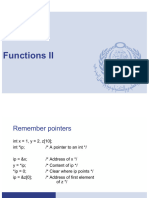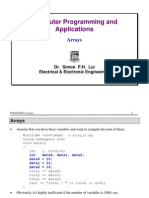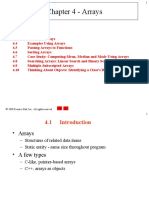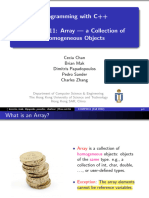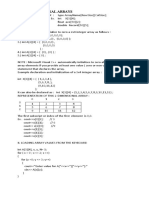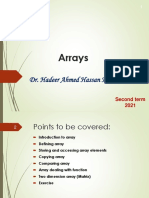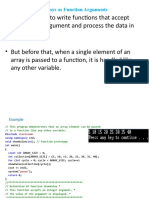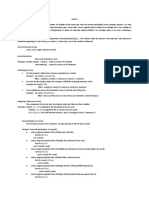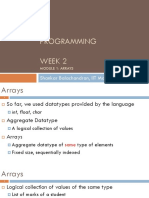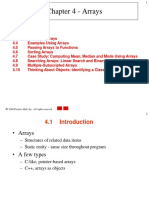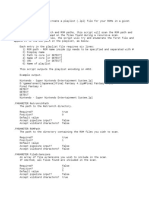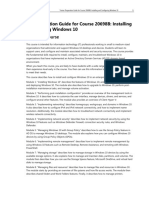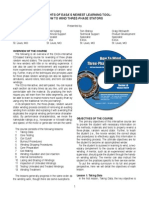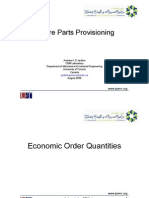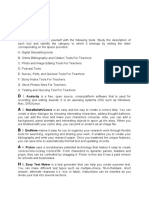0% found this document useful (0 votes)
13 views39 pagesDocument 6
This document covers the concepts of arrays in programming, including one-dimensional and two-dimensional arrays, their initialization, and how to pass them to functions. It provides examples of coding practices for manipulating arrays, such as calculating squares of elements and producing frequency distributions. Additionally, it discusses the importance of passing arrays by reference to avoid memory overhead and the use of constant modifiers to protect array data.
Uploaded by
1khichree1Copyright
© © All Rights Reserved
We take content rights seriously. If you suspect this is your content, claim it here.
Available Formats
Download as PDF, TXT or read online on Scribd
0% found this document useful (0 votes)
13 views39 pagesDocument 6
This document covers the concepts of arrays in programming, including one-dimensional and two-dimensional arrays, their initialization, and how to pass them to functions. It provides examples of coding practices for manipulating arrays, such as calculating squares of elements and producing frequency distributions. Additionally, it discusses the importance of passing arrays by reference to avoid memory overhead and the use of constant modifiers to protect array data.
Uploaded by
1khichree1Copyright
© © All Rights Reserved
We take content rights seriously. If you suspect this is your content, claim it here.
Available Formats
Download as PDF, TXT or read online on Scribd
/ 39






